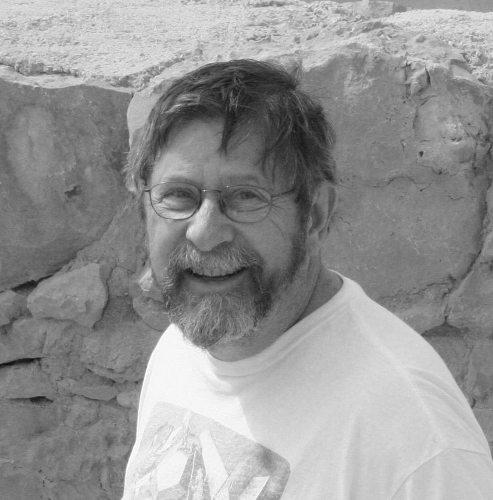- News
- Science
- Scientific Bodies
- Divisions
- Commissions
- Commission A1 Structure
- Commission A2 Structure
- Commission A3 Structure
- Commission A4 Structure
- Commission B1 Structure
- Commission B2 Structure
- Commission B3 Structure
- Commission B4 Structure
- Commission B5 Structure
- Commission B6 Structure
- Commission B7 Structure
- Commission C1 Structure
- Commission C2 Structure
- Commission C3 Structure
- Commission C4 Structure
- Commission C5 Structure
- Commission D1 Structure
- Commission E1 Structure
- Commission E2 Structure
- Commission E3 Structure
- Commission E4 Structure
- Commission F1 Structure
- Commission F2 Structure
- Commission F3 Structure
- Commission F4 Structure
- Commission G1 Structure
- Commission G2 Structure
- Commission G3 Structure
- Commission G4 Structure
- Commission G5 Structure
- Commission H1 Structure
- Commission H2 Structure
- Commission H3 Structure
- Commission H4 Structure
- Commission J1 Structure
- Commission J2 Structure
- Commission J3 Structure
- Commission X1 Structure
- Commission X2 Structure
- Past Commission Organising Committees
- Working Groups
- Centres
- Scientific Meetings
- Rules & Guidelines
- General Assemblies
- Meeting Proposals
- Future IAU Meetings
- General Assemblies
- EC Meetings
- Officers' Meetings
- Regional Meetings
- Symposia
- Focus Meetings
- Institutional Meetings
- IAU Offices Meetings
- IAU-Sponsored Meetings
- Letters of Intent submitted for 2024
- Letters of Intent submitted for 2023
- Letters of Intent submitted for 2022
- Letters of Intent submitted for 2021
- Letters of Intent submitted for 2020
- Past IAU Meetings
- Templates
- Other Meetings
- Grants & Prizes
- Scientific Bodies
- Publications
- IAU Publications
- IAU Strategic Plan
- Symposia
- WGSBN Bulletins
- Regional Meetings
- Information Bulletins/Catalyst
- E-Newsletters
- Focus Meetings
- Transactions A
- Transactions B
- Related Publications
- GA Newspapers
- CAPjournal
- IAU Books
- Brochures
- IAU Offices
- WG Reports
- Commission Reports
- Division Reports
- Past IAU Publications
- Rules, Guidelines and Instructions for Proceedings
- Publishers
- IAU Publications
- Administration
- About the IAU
- Statutes & Rules
- IAU Policies
- IAU Executive Bodies
- IAU Secretariat
- Resolutions
- Members Administration
- Administrative Dates & Deadlines
- International Organisations Relations
- Donate to the IAU
- Training in Astronomy
- Astronomy for Education
- Astronomy for Development
- Astronomy for the Public
- Office for Astronomy Outreach
- FAQ
- Themes
- Satellite Constellations
- Astronomy in Everyday Life
- How to Report a Discovery
- Careers in Astronomy
- Defining our Place in the Cosmos
- The Constellations
- Light Pollution
- Measuring the Universe
- Near Earth Objects
- How to Participate in Astronomy Research
- Naming of Astronomical Objects
- Naming of Exoplanets
- Buying Star Names
- Naming Stars
- Pluto and the Solar System
- IAU Member Statistics
- Our Moon: the Moon
- Meteors & Meteorites: The IAU Definitions of Meteor Terms
- UNESCO-IAU Portal to the Heritage of Astronomy
- Social Media
- Past Events
- Call for Online Resources
- Astronomy@Home Awards
- Contact

Robert T. Rood
United States
1942-2011
Obituary:
Bob Rood, born in 1942, was the oldest of five children and along with his siblings demonstrated an early interest in science and experimentation. He graduated with a BS in Physics from North Carolina State University in 1964. He received an NSF graduate Fellowship to pursue a degree in Physics at the Massachusetts Institute of Technology, where he received his PhD in 1969, working with Professor Icko Iben, Jr. on a thesis entitled A Theoretical Investigation of the Structures of Globular Cluster Stars. After graduation he continued at MIT as a Research Associate until 1971 after which he was a postdoctoral Research Fellow at the California Institute of Technology with William Fowler. While at Caltech Bob developed his lifelong interest in stellar nucleosynthesis and, in particular, the isotope Helium 3 and the role it plays in the Universe. Bob joined the Astronomy faculty at the University of Virginia in 1973 and remained on the faculty until his retirement in 2011.
Much of Bob's research career was devoted to stars and stellar structure, with particular emphasis on late stellar evolution, stellar abundances and nucleosynthesis. He was concerned with the lives of "ordinary stars" because of their potential to provide a test of stellar evolution theory at the most fundamental level. A portion of this work had cosmological implications, including efforts to determine the ages of the oldest globular cluster stars. Bob worked throughout his career on abundance measurements of Helium-3, a trace element produced during the big bang. Since stars also produce (and destroy) 3Helium+, the challenges for using it as a measure of cosmic density were daunting, requiring careful consideration of many processes. The observational challenges were also great, requiring pushing existing techniques to their limit. The eventual outcome of this work was the establishment of a primordial abundance of Helium-3 as one of the observational pillars of today's "Concordance" model of the Universe. Interesting, the last observations on the Green Bank 140-ft were made by Bob and colleagues, in an attempt to study 3He+ hyperfine line.
Another of Bob's long term interests was the question of extra-terrestrial life as considered from a scientifically rigorous, and suitably skeptical point of view. In 1981 Bob and James Trefil co-wrote the well-received book Are We Alone? The possibility of extraterrestrial civilizations, described by one reviewer as providing "engaging counter arguments to the prevailing inclination to believe in extraterrestrial intelligences."
Bob died in 2011.
Contributed by John Hawley
Past affiliation(s) within the IAU
- Past Member of Division III Planetary Systems Sciences
- Past Member of Division IV Stars
- Past Member of Commission 35 Stellar Constitution
- Past Member of Commission 51 Bio-Astronomy
Search individual members

















